Fender’s Failures: Ugly, Weird, or Misunderstood Guitars
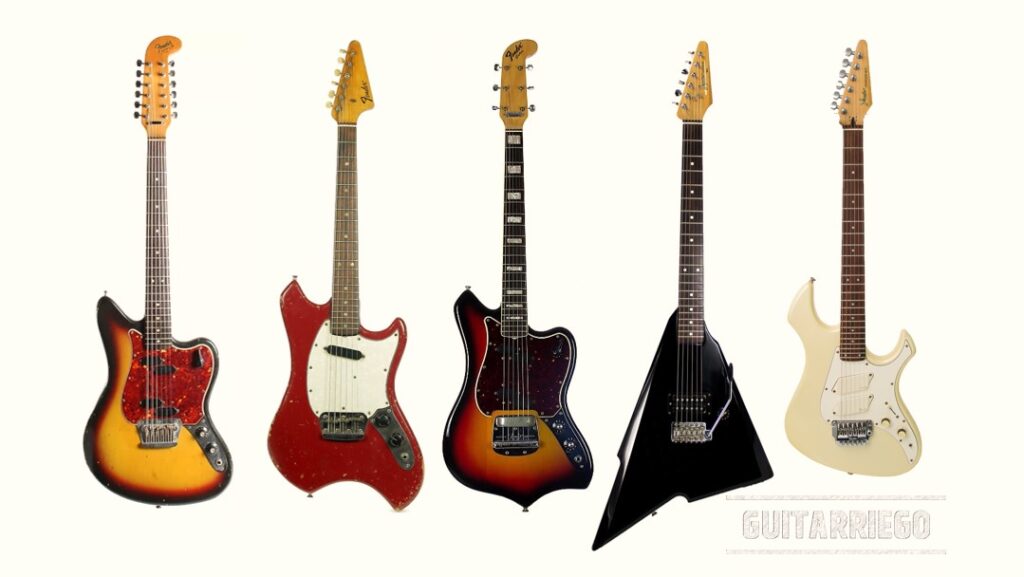
Fender throughout its history has released great models, but also in its way it has had great failures that included ugly or rare guitars that did not go with the legacy of the brand.
Fender’s failures: the ugliest or weirdest of all time
Our choice for picking Fender’s biggest failures was based on the aesthetics of the guitars selecting the ugliest, not to say gruesome, the shortest-lasting on the market, or simply because of their uniqueness. Of course, the choice is subjective and given the large number of guitars that Fender launched on the market, you will surely find another one that deserves to be in this ranking. You might even think that one of them was not a Fender failure.
Fender Marauder

This is probably the rarest Fender model. Although it was not a commercial failure due to poor Fender sales, this guitar never prospered, remaining a mere unviable project.
The Marauder was an offset model that was subsequently introduced to the Jazzmasters and Jaguars between 1964 and 1965, but never went into production. Fender intended to add it to the product line shortly before Leo sold the company to CBS.

Two versions of the Marauder were made: the Type I, with hidden pickups under the pickguard and with Tremolo and Hardtail bridges type Stratocaster, which appears in the 1965 catalog; and Type II, with the pickups installed more conventionally on the pickguard with a similar setup to the Stratocaster, and a new bridge more similar to the other offset. The Fender Marauder Type II never appeared in any catalog,

The few units, around eight, that Fender produced between 1964 and 1965 never officially passed the prototype stages. Supposedly the Type I / Type I version hidden pickups were either too expensive for mass production, or the technology itself was too expensive to license. Regarding the Type II, not even Fender has evidence why it was not released. Masterbuilder Carlos López of the Custom Shop and lover of the Marauder claims that it was too advanced a guitar for its time.

Thus, in addition to its novel and rare functionalities, the mystique that it was never commercialized and that the only guitars are a few prototypes, made it one of Fender’s rarest and most mysterious guitars.

Modern versions of the Marauder
Only in recent years, through economic lines such as the Modern Player or special editions, have guitars been released with the model name “Marauder”. However, neither of the reissues is totally accurate to the specifications of the original two versions. Thus, they have different pickup configurations. This year, the Custom Shop has revived the Fender Marauder as part of the Dream Factory releases, which features two Custom TV Jones-style pickups.
Fender Electric XII
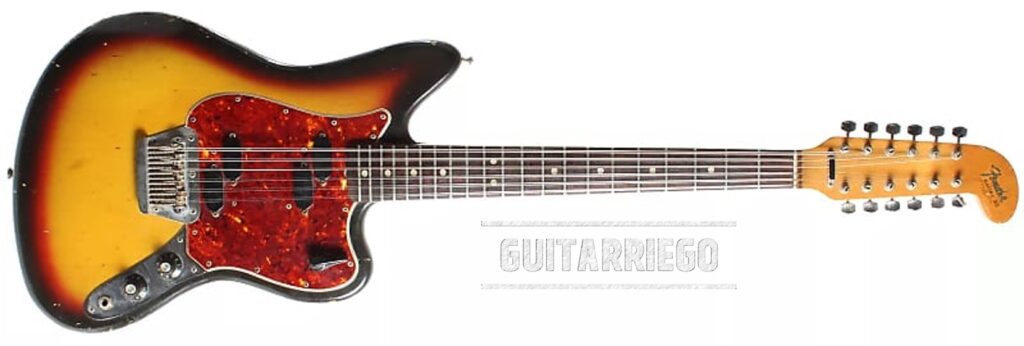
The Fender Electric XII designed by Leo Fender, was presented to the market in 1965 and its commercialization was between 1966 and 1970. This twelve-string guitar was aimed at the market for folk-rock guitarists.
Its body is similar to the Fender Jaguar and Jazzmaster guitar models. The mast is called a “hockey stick” because of the shape of the headstock. It came equipped with a unique design of four single coil pickups. For the strings it uses a design through the body similar to that of the Telecaster, for better sustain. The bridge has individual saddles for each of the twelve strings, allowing precise intonation, octave -or quintage-.

The Fender Electric XII was a commercial failure and was in the market for less than four years. Even so, it is the one that lasted the longest of the selection we made. Later, the remaining bodies and tuners were used for the Fender Custom, which was also marketed as Maverick.
Fender Maverick or Custom

The Fender Maverick, later named the Fender Custom, was a very short-lived model released from CBS in 1969. The Fender Custom or Maverick is basically a six-string Fender Electric XII. The Custom, like the Swinger, was an attempt to sell unused factory stock of bodies and necks. The guitar was made with parts from Electric XII guitars, including the body, neck, pickups, and pickgudard. It is complemented by Fender Mustang bridges, highlighting the gap between the bridge and the pickguard. The blades came with twelve holes, which is why the pegbox has six filled and coated peg holes.

Unlike the Swinger, the Custom was promoted and included in advertising and sales brochures. However, it was a failure.
This year 2020, Fender introduced the Maverick Dorado as part of its Parallel Universe series. This recreation sports a 9.5 “radius ebony fingerboard with 22 medium jumbo frets, two Tim Shaw-designed FilterTron humbuckers, and an Adjust-O-Matic bridge with Bigsby vibrato.
Fender swinger

The Fender Swinger, also known as the Fender Musiclander and Fender Arrow, was a short-lived electric guitar model released in 1969, with few specimens manufactured. The Swinger was an attempt by CBS, which had bought the company in 1965, to extract cash from inventory by combining unused bodies from the failed Fender Bass V with parts from the Fender Musicmaster. Another use of surplus stock was the Fender Custom, also known as the Fender Maverick. The Swinger was marketed as another cheaper guitar for short-scale students.

The Fender Swinger and the Maverick or Custom, were designed by Virgilio ‘Babe’ Simoni. The developments for both were not made by Fender’s Research and Development Department. Of the Fender Swinger only between 300 and 600 units were produced.
Perhaps, it is unfair to include it in the failures of Fender, since it was never put too much expectation; but in our opinion it meets the conditions to be on this list.
Fender D’Aquisto
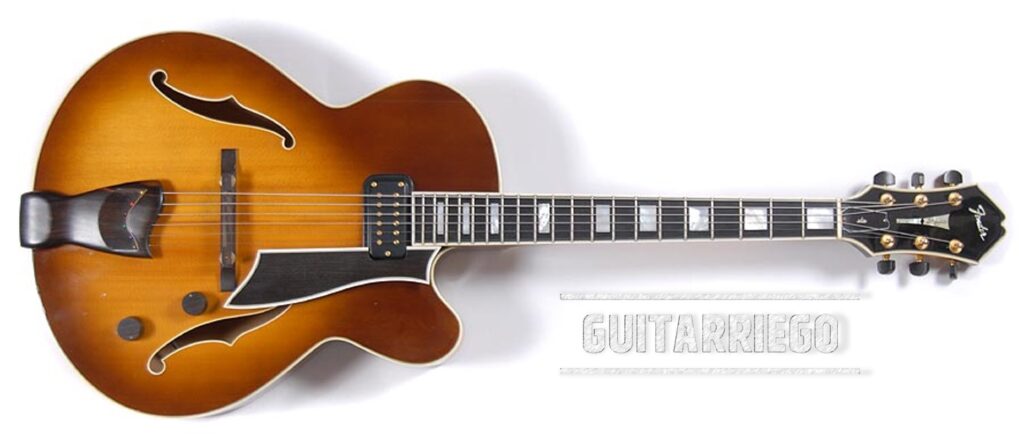
The Fender D’Aquisto was released as the flagship model of the “Master Series” released in 1984 by Fender Japan. This high-end archtop jazz guitar was designed by the acclaimed luthier James D’Aquisto and manufactured to his exacting quality standards and specifications in Japan.
This guitar has a hollow-body, top, back and arched sides of maple. The top and bottom are bound in several layers with a -single-cut. The neck constructed of three pieces of maple with a rosewood fingerboard. Rectangular mother-of-pearl inlays. The scale length is 24.75 “and the radius is 12”. It has versions of one and two specially designed humbuckers. Rosewood bridge, tailpiece and pickguard

While it is a great instrument, Fender was never a brand to be associated with Jazz, thus, it was never seriously considered by Jazz guitarists. This led to the Fender D’Aquisto guitar not being commercially successful and we included it in the list of top Fender failures.
Fender Performer

The Fender Performer was released in 1985 and was made in Japan. Its manufacture was suspended just a year later.
Its main characteristics are a small body with two horns. The rosewood fingerboard has 24 jumbo frets and features locking strings. The bridge is a System I floating tremolo. The controls have inserted rubber grips, the pegs are latching and fully enclosed gears.

Both pickups are humbuckers with a peculiar shape, angled, variable scale guitar. The controls on the Fender Performer are a volume knob, a tone knob, a three-position switch selector, and a coil split switch.
Fender, despite its entire history, has never been able to compete in the Superstrats market. Thus making the futuristic Performer one of Fender’s most important failures.
Fender Katana

The Fender Katana is an electric guitar designed by the company’s chief marketing officer, Dan Smith, in 1985. The Katana was developed to compete with the Flying V or “shark tail” guitars of the time, such as the Jackson Randy Rhoads, and in response to a request from Fender dealers. The Fender Katana was yet another failure by the guitar giant, and it was discontinued the year after its release, in 1986.

The Katana has a body-glued maple neck with rosewood fingerboard, inlays, or small triangle markers located at one of the top fret angles. With a 629mm -24.75 “- scale, 22 frets, tuner or truss rod adjustment. It features a System I 2-point locking vibrato bridge with a vice or string clamp on the headstock. The headstock, following the aesthetic, has an arrowhead shape and the configuration is completed by two humbucker pickups.

Like many other discontinued models, it has been reissued under the Squier brand and also with special editions such as a Masterbuilt Custom Shop model that was part of the Prestige collection. But without a doubt, Fender was never able to penetrate the Heavy Metal guitar market, making the Katana one of Fender’s failures.
Squier Venus by Fender
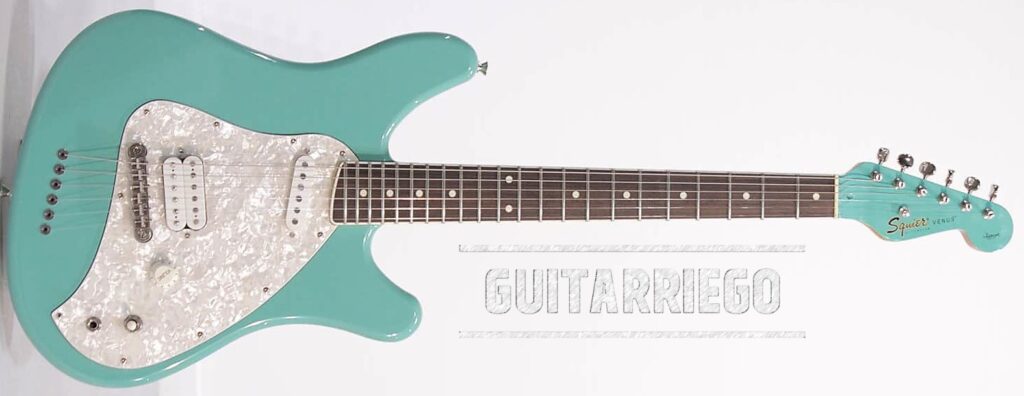
We allowed ourselves to include a Squier that is really eye-catching and rare, the Squier Vista Venus, also known as the Fender Vista Venus. The Squier by Fender Vista Venus is a guitar designed jointly with Courtney Love, and released in 1997, as a signature instrument, under the Vista series. At the time of its release, Courtney Love and Bonnie Raitt were the only two female musicians to have their own signature guitar.
Its design is a combination of different guitars such as the Mercury and the Rickenbacker, which gives it an aesthetic and style different from the traditional Fender. It was released in two configurations, one with six strings and the other with twelve, identified as Squier Venus XII. Available colors include black, sunburst, and surf green.
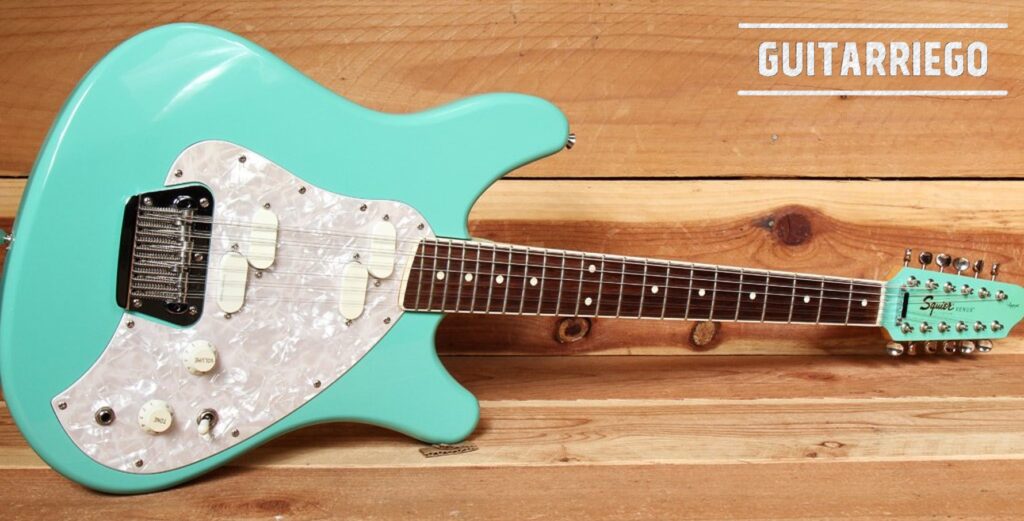
The selling price for the Squier by Fender Vista Venus was $ 699.99 for the six-string version. On the Venus XII side it was selling for USD 999.99. Thus, the prices of this guitar were not cheap to be Squier. It was suspended at the end of 1998, that is to say the year after its launch.
Garbage’s Shirley Manson has played a pink Squier Venus live multiple times. Also Ryan Jarman of British band The Cribs, a friend of Courtney Love, used a Fender Vista Venus Surf Green as lead guitar between 2011 and 2015.
Is there another guitar that you would include in the Fender flops? Leave us your comment.
For more information on the guitar, visit Fender web site.
Related Post: Fender vs Squier Stratocaster: differences and features.
You can share opinions or also chat about this and more with other musicians in our comments section.







I love my Katana. My mom bought it for me while I was still in HS in ’86. If you wish to see something you won’t run across every day, check out my Pinterest Katana board–I have a copy of the original store spec sheet that the store owner gave me, together with the two katanas I’ve owned (still have the first one which is a silvery green color now).